Garmin Vivoactive 3 Review
In this Garmin Vivoactive 3 Review, we take a detailed look at Garmin’s attempt to take on Apple’s Watch, Samsung’s Gear and Fitbit’s Ionic. The Garmin Vivoactive 3 enters new territory for Garmin with Garmin Pay. But will Garmin’s existing app store, their sporting prowess and this fledgeling payment system be enough to beat the Apple Watch into tech submission? Let’s see..

At A Glance – New to the Improved VIVOACTIVE 3
The Vivoactive 3 complies with Garmin’s recent consolidation around ’round’ watch faces. So this is a move away from the rectangular formats of the earlier Vivoactives and a token nod towards the formats of the high-end Garmin Fenix 5 (review) and Garmin Forerunner 645.
The market for a mid-range, smart, sports watch is huge. Apple dominate this and Garmin want a slice of the pie. Here are the areas where Garmin want to compete with the Apple Watch as an everyday watch and a sports watch. In order they are:
- Sporting competency
- Battery life
- Proprietary app store
- Aesthetics & User Experience
- Contactless Payment System
Much of its target market will not be particularly technically appreciative of the watch’s inner workings but many WILL appreciate some of the feature areas that arise from these new capabilities:
Onboard Music Storage is currently MISSING from the Vivoactive 3. Onboard music IS in the Forerunner 645 and my opinion is that it will soon find its way into the Vivoactive 3. DO NOT buy based on that opinion…wait!
In The Box
It’s a box destined for a cupboard along with those bits of paper entitled ‘Read This First‘ which you totally ignored 😉

You get a Garmin USB charging cable too (not shown) with a proprietary Garmin attachment at the other end.

Not in the box, but also included for free, is the Garmin’s health & fitness system aka Garmin Connect. Garmin Connect is wide-ranging and a little daunting in its expansiveness. After you have got used to it you will probably end up only needing to glance at the app or at the online dashboard for a better understanding of insights and trends.
Comparisons & Specs
This section is for the undecided amongst you and for the seekers of geeky tech-details.
Key Comparison – Apple Watch 3 & Fitbit Ionic
 Aesthetics: The Vivoactive 3’s aesthetics were not as good as I hoped. The watch looks bland enough to not offend anyone and nice enough to wear. The build quality looks better than it feels. I suppose the silver bezel adds a ‘bit’ of class but the relatively poor screen resolution and colours are a let down.
Aesthetics: The Vivoactive 3’s aesthetics were not as good as I hoped. The watch looks bland enough to not offend anyone and nice enough to wear. The build quality looks better than it feels. I suppose the silver bezel adds a ‘bit’ of class but the relatively poor screen resolution and colours are a let down.
- App Store: Garmin’s app store is sport-focussed and improving. Let’s face it, it’s the best ‘SPORT’ watch+app store right now. Apple are catching up on the sports front and are leagues ahead on the non-sports front. The Ionic’s app store is in a fledgling state BUT WILL probably grow to quickly be larger and more varied than Garmin’s. Having said that, Garmin’s CIQ apps also include data fields which are clever sport-specific ways of putting bits of sporting data into your workout screens.
- Battery Life is closely linked to screen display and GPS usage as well as to, err, battery capacity. The Apple will always struggle here but the v3 Apple Watch now makes a passable attempt. Garmin is way out in front with a battery life 13 sporty hours (7 days as a watch) and Fitbit’s Ionic makes a sound play at 4 days. The reality is that with the Apple Watch you will, unfortunately, ALWAYS being wondering where the charger is. With Fitbit and Garmin you won’t have to worry for a couple of days.

- Onboard Music – The Apple Watch 3 can properly stream music over an inbuilt cellular link. The Garmin can’t do music at all, other than to control what is on your smartphone. Fitbit make same the music play that TomTom made over a year ago, namely to copy tracks from your computer or from the Pandora service

- Payment System – Both Garmin and Fitbit have a MASSIVE game of catch-up to play here as their service is slowly rolled out across numerous global financial providers. Neither Garmin Pay nor Fitbit Pay will work for most of you in 2017.

- All the other techy stuff in these 3 devices is relatively similar and covers most people’s needs ie The generic health, sleep, activity and sporting capabilities are similar for most people and, in each case, can be/will be augmented by apps.
The more sporty amongst you will buy the Garmin. The more image-conscious, trend-followers will buy the Apple-like everyone else. Maybe the Ionic offers a slightly better, more practical and all-round compromise package?

Sporting Comparison – AndroidWear
Apple, Garmin and Fitbit have their own platforms as do Samsung. However Google’s angle is entirely different as they offer an open platform for hardware from any vendor (AndroidWear2). Consequently we have seen 10s of new entrants building either sports-watches or dress-watches on AndoirdWear2. I don’t profess to know all of the dress-watches but the best of the sporting ones appears still to be Polar’s M600 (review here).
 With the M600, Polar have a superior hardware offering to the Ionic for sporting usage. You might not like the overall looks of the M600 (I do) but it’s a serious sporty performer. Although even then, a dedicated sports watch (eg Polar, Suunto or Garmin) will in many cases be ‘better’ for sports than the M600 with more features, wider accessory support and a longer battery life. Although such sports watches would be nowhere near as smart as the Polar M600 with its wide range of AndroidWear apps.
With the M600, Polar have a superior hardware offering to the Ionic for sporting usage. You might not like the overall looks of the M600 (I do) but it’s a serious sporty performer. Although even then, a dedicated sports watch (eg Polar, Suunto or Garmin) will in many cases be ‘better’ for sports than the M600 with more features, wider accessory support and a longer battery life. Although such sports watches would be nowhere near as smart as the Polar M600 with its wide range of AndroidWear apps.
Garmin Vivoactive 3 Key Capabilities & Specifications
Garmin’s Vivoactive 3 is a reasonably well-specified smart sports watch.
Other than the slightly under-specified screen, the Vivoactive 3 has the necessary bits of hardware to be continually improved by changes to software and apps. So it’s starting in a good place.
Whilst the screen is the same/similar to the Fenix 5 range, it lacks the resolution and vivid colours of the competition like the Apple Watch 2/3, most AndroidWear2 devices, Samsung’s Gear Sport and Fitbit’s Ionic.
But the motion sensor, the GPS , the ELEVATE optical HR, barometer all have the capability to at least put in a competent performance.
But do they?
Here is what it can do
- Track steps, distance, floors, active minutes & calories burned
- Many watch faces
- GPS/GLONASS to track pace, distance & routes
- Track Swims, lap count, duration & calorie burn. Water resistant to 50m
- Use continuous heart rate tracking & real-time zones
- Track Sleep .
- Smart Notifications
- Download & create workouts
Here are the components that enable the Vivoactive 3 to do it
- Screen: Corning Gorilla Glass 3 covering a circular, 30.4mm touchscreen with 240x240px
- Sensors & Components: Barometric Altimeter, 3-axis accelerometers, Digital compass, GPS/GLONASS, Optical heart rate (OHR) monitor, Compass,
- Lithium-polymer Battery: up to 7 days with a GPS battery life up to 13 hours.
- Memory: Saves 7 timed activities and 14 days of activity data. Saves daily totals; Stores GPS & heart rate data at 1 second intervals or SMART intervals;
- Syncing: to computer via charging cable, smart phone via Bluetooth BUT NOT WiFi
Specifications are all well-and-good. The reality of real-life usage CAN be another matter entirely. For example, no wrist-based device will properly track sleep cycles to Polysomnography (PSG) levels of accuracy for MANY years. For example the GPS battery life is UP TO 13 hours but what does that mean in reality? It might store per second GPS and OHR data for your sports but if the sensors are rubbish then the stored data will be rubbish…alebit accurately recorded rubbish.
We will cover some of these ACCURACY ISSUES later on in this review
General Usage
The watch is always on and now Garmin is able to display a second-hand that moves every second. Turn the wrist or tap the touchscreen and the backlight illuminates all.
Navigating around the one-button Vivoactive 3 is a new experience in Garmin-World.
The touchscreen mostly works and mostly works as you would expect. Swiping in any direction does what it should and a tap or double tap or a held press will do things or bring up options to work with.
On the left hand slide is a novel slider which scrolls up and down whatever is on the screen. I kinda like that.
 Then there is the lonely button on the right hand side. It mostly stops and starts exercises. But it also brings up a shortcut menu if held in. When not in exercise mode it definately does things, I’m just a little uncertain of the entire logic behind what it does.
Then there is the lonely button on the right hand side. It mostly stops and starts exercises. But it also brings up a shortcut menu if held in. When not in exercise mode it definately does things, I’m just a little uncertain of the entire logic behind what it does.
 Fear not ! either tapping the screen or pressing the button will do what you want. If in doubt, just try both.
Fear not ! either tapping the screen or pressing the button will do what you want. If in doubt, just try both.
Swiping or sliding up/down will scroll you through your daily activities be that steps, calories, 247 heart rate, or stairs climbed. Tapping on any of those will bring up some more detail.
THE button brings up a slightly modified flavour of Garmin’s more recent sport menus. Essentially there is a list of sports and each sport has various options and the ability to perform a workout in those sports. An app is accessed as if it were a sport as shown in the STRYD image below
For most sports you can perform a good level of personalization for example to: select alerts, data screens, data fields, autolaps, manual laps (double-tap) and pauses.
Pressing and holding the button gives some shortcuts.

Watch-wide functionality like your profile, pairing and watch faces are accessed by pressing and holding the main watch face.
Specific Usage – Onboard or Streamed Music
Nope. None of that. (November 2017)
You can control music on your smartphone and to do that your smartphone must be within range with the smartphone paired to your headphones.
Specific Usage – Garmin Pay
This just doesn’t work right now (November 2017)
Similarly to Fitbit, with Fitbit Pay, Garmin have to conclude endless negotiations with numerous financial institutions. Both are playing catch-up to Apple and to AndroidPay.
Specific Usage – Apps
Much of the pre-loaded bits of functionality on the Vivoactive 3 are built-in apps, probably CIQ apps. They are written by Garmin.
There are 10s/100s of other 3rd party apps already waiting for the Vivoactive 3. Some of them great and useful. Some of them, errr, ‘peripheral’. Here are some interesting ones:
- Navigation – dwMap (416,000 downloads !) Navi r.485 (12,000 downloads), BF Hiker map (3,000 downloads),
- Other sports – Ski Tracker (10,700 downloads), Inline Skating (5,600 downloads), Elliptical (53,000 downloads)
- Sports Sensor Enablers: STRYD Power (9,300 downloads)), MOXY Cycle (1,400 downloads), Runscribe (hey it’s new!)
- Data Fields – Strava Live Suffer Score (346,000 downloads), Dog Tracker.
Specific Usage – Multisports

This is NOT a triathlon watch for Age Group triathletes. Whilst it would not even enter into consideration for the best triathlon watch, it could be used as a ‘recreational’ tri watch for your one-off triathlon. Like MANY other watches, the Vivoactive 3 has sport profiles for swimming, cycling and running. You just have to choose each one manually during your race. Note:
- You would have to start each sport separately if you wanted to do a multisport event or brick session
- Cached HR from the HRM-TRI cannot be retrieved from swimming
- Cycling power meters are not supported
- No Open Water Swim mode
The Garmin Ecosystem
Garmin has their CONNECT app and the CONNECT dashboard on the net. You can use Garmin Express software to connect to your computer and you REALLY should use that for firmware updates, although bluetooth communications also work via your smart phone for data synchronisation.
October 2017 saw yet another re-jig of Garmin Connect. It seems like it changes every 6 months. Garmin has a LOT of product types including golf, aviation and dog tracking. They try to put it all in one place. I find it a little unwieldy and finding the ‘right place’ is often not obvious, even when you are relatively used to it like I am. The general, regular stats that MOST people need ARE well-covered in Garmin Connect. Garmin Connect only has relatively limited analysis capabilities BUT is able to easily link your data to 3rd party analysis tools if that is your thing.
I don’t want to dwell on this too much, so here is a slide show giving an indicative view of the various insights and trends. The screens look at: the overall dashboard; daily and trending 247 heart rates; daily and trending sleep. It’s generally good.
Clockfaces in the Garmin Vivoactive 3 Review
The clockfaces are OK and consistent to recent historical Garmin standards. If you like what’s gone before you’ll be fine with these.
If you were expecting a flash of high-resolution coloured vividness…you’ll be disappointed.
The image on the right looks OK, you can just start to see the pixelation that spoils the look in ‘real life’. I also seem to have made the colours appear more vivid than they normally are…no photoshop honest!! Turning up the watch’s screen brightness can help in the looks although it tends to wash the colour out a little.
Relatively recently Garmin allowed clockfaces to update more frequently than ‘per second’, so you can now get a moving second-hand, albeit slightly pixellated.
Garmin Connect will let you choose over 30 watch faces and, as you can see (link to: garmin.com), some are a little on the tacky side. Choose wisely…
Accuracy
A sports/fitness watch needs to have a reasonable degree of accuracy to provide useful feedback and support any guidance given. I would argue that this is very important for Garmin. Their main shot at the large ‘middle market’ for ‘general sports’ smart watches is that they ARE MORE COMPETENT AT SPORTS than the others. At least that’s what they would say. Here’s what I would say….
Acuracy GPS
TheGarmin Vivoactive 3’s GPS is broadly OK for the kind of purposes its intended for. For example, as a general running watch it is fine. However a more serious athlete would probably want a little bit better accuracy. Having said that it’s as good as the Polar M430 and as good as the Garmin Forerunner 235 and a little better than some of the Fenix 5 range. Polar’s V800, Suunto’s AMBITs and most of Suunto’s SPARTANs are better.
GPS accuracy is the building block for how the Vivoactive 3 gives speed, distance and a pretty post-run track on a map.
When I put the Garmin Vivoactive 3 through my GPS test – methodology and raw data files here (link to: the5krunner.com) it scored 73-75% which was a bit better than I expected, beating the uber-expensive Fenix 5X (69%). The Fitbit Ionic’s result (67%) was worse and the Apple Watch’s result (75%) was the same.
The Garmin Vivoactive 3 performed very well when GPS conditions were easy and the performance fed through to a half-decent instant pace being displayed in such conditions. But once the going got tough with the addition of trees or building then this is where the Vivoactive fell behind the better sports watches
Here’s an example where the Vivoactive (Green) has me over 5m away from the real track over the bridge

And on a different day you can see here the Ionic (blue) easily tracks a tree-lined path well, whereas the Vivoactive 3 (red) struggles when really it should not be struggling.

And here is another example where it simply just does not cut the mustard.

In fact really I don’t know how it did so well in my standard test. But it did.
Just for completeness here we have a cycling track. It’s still the worst of the bunch. I could also show you lots of sections of road where it was perfectly fine.

Just to be clear. I use just GPS so that I am generally able to compare like with like. Which I think is reasonable.
Accuracy GLONASS
GPS can be augmented on the Vivoactive 3 by GLONASS (explanation, link to: the5krunner.com). GLONASS is enabled in the settings for each individual sport on the Vivoactive.
GPS+GLONASS theoretically increases positional accuracy when buildings & trees are near. Historically I have found that to NOT be the case with Garmin watches in most cases when running. I enabled GLONASS and got this:

The Vivoactive performed well enough in the tree cover next to the Thames but no better than the other two.
Finally here the Vivoactive 3 (with GLONASS) and Ionic both perform better than the Garmin Forerunner 235. This is in wood with relatively dense surrounding tree cover (Autumn/fall with leaves, as satellite image).

With the Vivoactive 3 I would say that using GLONASS makes little difference but “can’t hurt“. In some Garmin watches the GLONASS performance has been notably worse than GPS alone.
Accuracy – Optical Heart Rate
The Fitbit Ionic’s heart rate accuracy is generally fairly good for an optical HRM, notably when running. Please appreciate that optical HR accuracy can be good but will vary from person to person and from sport to sport. Endurance runs and stationary bike training tend to allow good oHR performance but every other exercise is prone to errors mainly due to high or rapidly changing heart rate levels and wrist movement. If you are buying an optical HR watch please NEVER EXPECT accurate results in sport. If you’re lucky, you might get them.
As found on several optical devices, there can be unusual levels at the start of exercises and then the oHRM settles down to the ‘correct’ level. Here the Ionic does that and after about 6 minutes performs well. Of particular note is the Green line which is also bad at the start. This green line is the supposedly accurate Garmin chest strap – I’ll have to check the battery (although the battery is one month old). Garmin’s Vivoactive 3 nails this run, that’s using Garmin’s latest iteration of their ELEVATE sensor (v3, I think).

Here was a similar hour session but including a hill. My effort was supposedly similar as I was testing running power meters in a steady-state. As you can see the Vivoactive 3 was perfectly acceptable with only, perhaps, a slight lag at 30 minutes to worry about.
Getting rid of that pesky Garmin HRM-TRI strap from the frist chart and using a new one we get much the same kind of picture. This time we look at a much longer run with a relatively constant and lower level of aerobic intensity. The garmin is marginally better than the Ionic. The Garmin only has one trough and the Ionic is a bit spikey. This is pretty good performance for optical HR. Nice job Garmin+Fitbit (note I can’t also wear a 3rd optical device like the Apple Watch as multiple optical signals on one arm will likely cause errors).
Lets take our running shoes off and go cycling. Normally I expect to see variable results from optical HR devices. I wasn’t surprised with the results. The Ionic had a moment of HR madness at 42 minutes but other than that was broadly OK with the Vivoactive 3 being unacceptably poor. This was not surprising as, in my experience, Garmin tend to have much better running+ohr performance than cycling+ohr.
I can add some more charts here if anyone wants them, please comment below eg for HR performance during gym workouts or swimming. FWIW I did NOT get a near-perfect cycling workout…all had notable issues at various times, admittedly not as bad as the example above.
Accuracy – Steps
Steps seem broadly in line with previous Garmin step counters. They are ‘about right’. I get between 96 and 103 steps per 100 actual steps when specifically trying to ‘test’ that. Of course, false steps come in when doing non-walking movements such as driving but Garmin seem much better in that respect than in years gone by.
If you are switching to Garmin from another brand then don’t be surprised to see a daily variation but over time you will find the Garmin to be at least indicative of reality and hopefully consistent too.
Accuracy – Sleep
Here is Garmin’s analysis of one night sleep and the same night from EMFIT. I would consider EMFIT to be the ‘best’ sleep tracker (link to: EMFIT review on the5krunner.com).
You can, perhaps!, see that there are broad similarities. But the reality is that they are different. The reality is that neither are ‘correct’.
EMFIT uses accurate heart rate modelling (HRV) and more complex modelling of whole body movement, whereas Garmin will use less accurate heart rate modelling (rHR) coupled with wrist movement.
Accurate sleep tracking is for the world of sleep scientists with special laboratories. We can only get indicative insights into our sleep patterns. QS EMFIT (review here) and OTHER Ring are the most accurate you can get if you are particularly interested in sleep analyses and the former have products targeted at athletes as well as people with specific sleep conditions.
Accuracy – Elevation
The Vivoactive 3 has a barometer.
I haven’t paid too much attention to the Vivoactive 3’s elevation accuracy. Here is one example which shows that both the Ionic and the Vivoactive were pretty good at trending to the true changes in elevation. The Vivoactive 3 allows altitude to be calibrated before heading off, so if you set it to a known altitude such as that of your home you should be good to go.

The only reason I am including elevation accuracy in this watch is that November 2017 sees the release of Garmin’s running power calculations. These require an accurate barometric altimeter for the maths to work out the Watts. To my untrained altimetric eyes this performance looks OK. Perhaps someone can shed any more light on the accuracy required from the barometer for running power?
Running With Power
This is a work-in-progress task for me right now that will take a few weeks. Garmin will soon be releasing their power algorithm so I hope to get some comparisons of that to RunScribe’s running power (currently beta, Nov 2017). Basic integration and support for STRYD (reviewed here) is already there with the Vivoactive 3 and mostly working. Garmin have to tidy up a few details like calibration and footpod-as-speed source but that will come soon.
Other Interesting Bits
- The screen DISPLAY can be rotated by software by 180 degrees. Meaning you can also change the straps around to have the button on the other side. Why? Why Indeed! Maybe some people can flex their wrist and inadvertently press the button, moving the button would put a stop to inadvertent presses. Or maybe it helps left-handed people.
- I suspect that Garmin GPS algorithm involves a degree of directional prediction. If you end up going in roughly that predicted direction then all seems good. But the reality of where you go is often different! Sometimes strange accuracy ‘blips’ occur probably because it takes Garmin a while to realise you have gone ‘off track'(!) and then it has to recalibrate back to your real position.
- I have had battery issues with the charge fully depleting within a day. Apparently firmware updates address some of these concerns but I am not yet convinced.
- Some footpods do not always seem to pair.
- Some Footpods cannot be manually calibrated eg RunScribe.
- Double-tapping the screen introduces a manual lap. This worked surprisingly well for me…even with gloves. Garmin seems to have finally nailed touchscreens after previous widely recognised disasters (link to: gplama on youtube). Well, shall we say instead”nailed as much as a touchscreen can be nailed”?This manual lap feature must be enabled in your RUNNING sport profile to work when running
- You can create COMPLEX structured workouts on your Garmin Connect app and sync to the Vivoactive. Cool!
- It has vibrate alerts, possibly a tad on the weak side. No audio alert
- The manual altitude calibration appears not to save the value, so I’m somewhat unsure of what it does with the value.
- You can pair to an external heart rate monitor to save on battery life and increase accuracy. The Ionic can’t do that but the Apple Watch can.
Best Running Watch?
The Vivoactive will never rank as the ‘best’ running watch. BUT it could rank highly as ‘the best smart sports watch‘ or maybe ‘the best smart running watch‘. Maybe.
Have a look
Link: Best Running Watch Report

Summary & Recommendations
I’ve run 80 miles or more with the Vivoactive 3 for this review and cycled further than that. It’s left an indelible imprint on my mind as well as my wrist. Ha ha!
Having bought the Vivoactive 3 myself I have no axe to grind with Garmin’s PR team either way.
I expected the device to be moderately innovative, good at sports and fairly pretty. I guess the truth is my expectations were slightly too high.
- My main disappointment was the lack of onboard music.
- My secondary disappointment was that Garmin Pay will effectively not be working for most people until 2018.
- My third disappointment was that the Vivoactive’s looks and build quality were not quite as good as I had hoped from some of the photoshopped, pre-release images from Garmin. Being fair it is a notably classier look and build compared to, for example, the Garmin Forerunners (235, 630…) and indeed it is classier than previous Vivoactive models. I had hoped from something with more of the feel of the Fenix range but then I suppose that is factored in to the price differential to the Fenix range.
The accuracy overall was generally in line with what you would expect from a Garmin. It’s good enough for the intended mass market but perhaps lacking very slightly for what the performance athlete might want.
For a sporty smart watch the vivoactive 3 is NOT as far ahead of the Apple Watch 3 as you would imagine and this could be a REAL issue for Garmin over the next two years. Vivoactive 3 is NOT notably more accurate than the Apple Watch. The only material difference in favour of the Vivoactive 3 hardware is the battery life. The breadth of Garmin’s Connect ecosystem and it’s support for its app on Android gives it other sporting advantages.
Even if you look at Garmin’s CIQ apps; there are quite a lot of them but not a huge amount..one reason being is that they are all free. Developers can’t make any money out of it!! Why bother?


Remember in the introduction we covered the 5 areas where Garmin look to compete against Apple ? Let’s see how they’ve done:
- Sporting competency – YES for the mass sports market
- Battery life – YES
- Proprietary app store – Mostly YES
- Aesthetics & User Experience – meh
- Contactless Payment System – NO
The Vivoactive 3 is NOT an Apple Watch killer. No way. Really it will just about hold Garmin’s current market position, perhaps doing well from upgraders from the Vivoactive HR.
Price, Discounts & Availability
Hopefully you enjoyed the review as well as finding it helpful in your decision-making process.



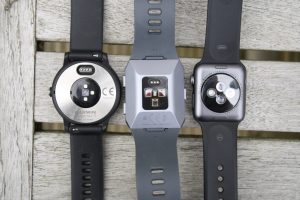 Aesthetics: The Vivoactive 3’s aesthetics were not as good as I hoped. The watch looks bland enough to not offend anyone and nice enough to wear. The build quality looks better than it feels. I suppose the silver bezel adds a ‘bit’ of class but the relatively poor screen resolution and colours are a let down.
Aesthetics: The Vivoactive 3’s aesthetics were not as good as I hoped. The watch looks bland enough to not offend anyone and nice enough to wear. The build quality looks better than it feels. I suppose the silver bezel adds a ‘bit’ of class but the relatively poor screen resolution and colours are a let down.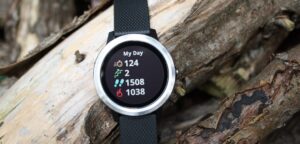








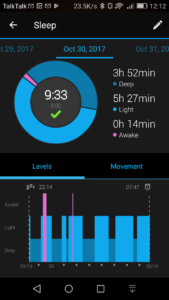

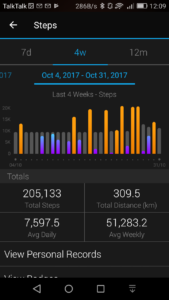
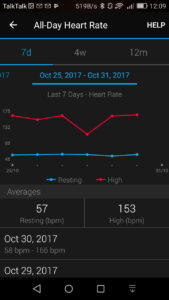






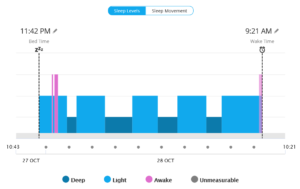

I have nothing of note to add as I have ever owned this particular model other than this…
They should have kept the rectangle face, it was what separated it from the circular bunch. Now, it looks like they stuck a sink washer on the face and called it a day.
we’re obviously related 😉
Thank you for the review.
When using apple watch for GPS, did you have it paired with your phone? I find this can enhance GPS accuracy – but I guess it is then not a like-for-like comparison. I’ve ready many reviews and comparisons and this is the only one where I’m hearing concerns for GPS accuracy – which is a total deal-breaker for a GPS watch.
Also – is it worth noting that Vivoactive and Apple Watch can pair with a chest-strap. Ionic cannot. This is important when cycling, which seems to make most optical sensors struggle.
Cheers
JBo
hi Jon.
yes i specifically took the phone out of the equation.
va3 and Watch were similar gps accuracy. nothing spectacular but could be better. certainly generally usable but depends on what you want to use it for.
cycling: yes fair point about the ionic, hopefully i covered that in the ionic review.
yes all fair point tho, if i get time i will check through the review to make sure i did address these points.
Thanks mate – really appreciate the info. It isn’t an easy decision, which I guess just means there are lots of good watches to choose from.
Thanks for the detailed review.
I have a quick question regarding accessibility of raw data on the vivoactive 3. Can one pull the .fit files directly via USB to a computer or does one have to use a special Harming software.
The reason I ask is that I want to process the data myself (Linux) and don’t want to run some extra software that requires a Windows/Mac computer.
Any hints much appreciated.
Alex
the *.fit files will be in the \garmin\activity folder or \activities
with caveats and for the VA3 there should be no issue
non workout files will be in other folders
I have a quesion for you. related.!!
on other garmin devices (eg 645) and on mobile phones it is not possible to map a folder to a windows DRIVE. such devices appear to be accessed as an MTP device. I want to be able (like you!!) to pull of the files from such devices and access them locally in a folder of my choice, either that or map the folder by some clever means to a windows drive letter (that cant be mapped as normal in windows on a smart phone). can you advise on that – maybe answer in terms of a smartphone then you might be able to replicate what i am saying?
Thanks so much for the hint, this info was rather hard to come by.
When you read the MTP article on Wikipedia (https://en.m.wikipedia.org/wiki/Media_Transfer_Protocol), especially the Windows related parts, you’ll see that MTP is designed to limit your access to parts of the device’s filesystem that the vendor wants you to access.
Smartphones are a good example, neither Android nor iOS let you access the filesystem completely when you plug in via USB.
Under Windows to my knowledge there is no way to mount (assign a Windows drive letter) to MTP devices, but I am no Windows expert.
Under Linux you can mount a MTP device via the FUSE system (the Wikipedia entry above talks about that too). However you still only get access to the parts the vendor wants you to access.
Under MacOS there are some tools to access Android devices like drives (also in the Wikipedia article) but that is about it.
Talking of Android phones, at least on those who have SD card support (like my Sony) you can transfer files internally to the SD card and then that card is a real Drive when you take it out and plug it into your computer.
Given your post, I assume you use Windows, so I am afraid I can’t help more. The whole MTP and proprietary file transfer businesses is exactly the reason I asked if the VA3 can be plugged as a USB device. Else it would be useless for me.
Hope this helps in any way as you helped me much. Thanks again.
Alex
Which is better, vivoactive 3 or amazfit stratos? Now you can find the garmin at 200 eur and the stratos at 130 eur.
Thank you
better for what purpose? if you read the amazfit review you will see the issues it has
Hi, thank you for your review.
What would you suggest between Vivoactive 3 and Amazfit Stratos? Mainly for cycling Mtb, swimming pool and daily tracking. I’m not a serious sport man 🙂 no race.
Now the vivoactive 3 is about 200 eur and the stratos at 130 eur.
Thank you so much.
amazfit http://geni.us/AmazfitStratos or http://www.tkqlhce.com/click-8848897-12808288?url=https%3A%2F%2Fwww.gearbest.com%2Fsmart-watches%2Fpp_1426629.html%3Fwid%3D21&cjsku=245836801
Hi, I really enjoyed reading your reviews. The are really comprehensive and helpful!
Before reading this review, I was leaning towards buying the FR235 which is right in my price bracket until I found this watch which is much more (I think) aesthetically pleasing. But From what I can tell, there really isn’t much in what they offer in capability or even price at all and was wondering which one you would choose? Or is it better I spend a little more on a different watch?
I’m not madly competitive when it comes to running but I do find having a sports watch that does push me more (I.e. tracking pace and distance) and the day-to-day activity tracker is something I quite enjoy having.
Could you share your thoughts?
i guess the reviews would say it in more detail
i still use my 235, i dont use the va3
i don’t like either as a 24×7 activity tracker but the 235 is a sweet little running watch. you can probably get one for $150 if you wait for the right moment.
Thank you for a very good review. Helped me clarify lot of my doubts regarding the VM3. I am in the market to upgrade my watch and I have found today the price of fenix 5 is about 350 usd and VM# is about 220 – all of these are discounted prices of course. I run about 150kms a month and I am looking to add more data points to analyze my runs. would fenix 5 be a better choice or pairing a VM3 with HR strap be a better choice? I am worried about the fenix 5s legacy issues of gps and other bugs.
yep i’d steer clear of the fenix 5, there are legacy hardware issues.
fenix 5 plus is ok
forerunner 935 is ok.
5+/935 are superior to va3
yes always pair to a chest strap if you want good data. HRM-TRI is a good hrm (cheap if you get a bundle) but any hrm will be fine in reality just that the hrm-tri/run will give you caching of data AND RUNNING DYNAMICS.
as @kk1 says the 935 might not have the correct ‘work’ look for 24×7 wearing
any of these help the blog..thank you
http://geni.us/garminforerunner935
https://geni.us/Garminvivoactive3
https://geni.us/GarminFenix5SPlus